As an amateur scholar and die-hard enthusiast of everything to do with Alice in Wonderland, I have launched a podcast that takes on Alice’s everlasting influence on pop culture. As an author who draws on Lewis Carroll’s iconic masterpiece for my Looking Glass Wars universe, I’m well acquainted with the process of dipping into Wonderland for inspiration. The journey has brought me into contact with a fantastic community of artists and creators from all walks of life—and this podcast will be the platform where we come together to answer the fascinating question: “What is it about Alice?”
It is my great pleasure to have Fernando Del Rosario join me as my guest! Read on to explore our conversation, and check out the whole series on your favorite podcasting platform to listen to the full interview.
FB:
Let me first tell people what it is that you do because you have a company called Concept Zombie. I'm going to read from the homepage because I think it's pretty great. “Concept Zombie is a ‘Yes we can do that!’ creative company. From creative problem solving of art direction and design to strategic media buying, Concept Zombie has the ability to scale up or down depending on the opportunity at hand. The contagious and positive mindset of the company along with a tenacious and unrelenting work ethic, is in the core of the founder Fernando Del Rosario. Every single person on the team embodies these two traits: a positive mindset and work like your name is Elon Musk or J.K. Rowling mentality. How can we creatively help you? And we can't wait to make something awesome for you.” Tell me about that statement and how that embodies you as the founder, because it always starts from the top down. How do you instill that in your employees?
FDR:
A little bit of my background, so I am the youngest of four kids. I was born in the Philippines and when I was 11, my mother took all four kids on our own from the Philippines to the United States. Detroit, Michigan, specifically because the Philippines and Michigan are so similar. But it was one of those moments where you just hit that fork in the road. Sometimes that fork in the road is forced upon us. My mom decided that she would risk it all and move us here for a better life for all four kids. We ended up renting a house and my mom was smart enough to rent a house in between the border of Detroit and Grosse Pointe. The reason for that was because the Grosse Pointe school system was much better than Detroit’s. I learned photography, graphic design, illustration at the high school level, and I don't think I would have had that opportunity if we had lived in Detroit proper. So, that was a launchpad for going to art school.
But all that being said, I was having a conversation with someone a while ago, they asked, “Why do you work so hard? Why do you strive for so much?” I thought to myself, “I could just be ‘average’ or just do what is needed but I could have done that in the Philippines. I could have been just average in the Philippines and really saved my mom the headaches and heartaches and money-aches. This wasn’t cheap and we started from the ground up. I literally have the American Dream of being able to have these opportunities in front of me and taking advantage of it. That’s the first baseline, I guess you might call it. From there, I was a company man. I did what I was supposed to do. Go to school, get my degree, get a job, do well in that job so that other companies would want to work with me, and so I moved up the ranks.
FB:
Was that a mindset that your mom instilled in you? Was that a predetermined path that she thought, or you thought, because you're an immigrant, this is what you do and then did you turn it around and become more entrepreneurial? How do you separate from those two paths?
FDR:
It’s a little bit of both. I remember having a conversation with my older brother when I got into art school, and I wanted to do it full time so I could be done in four years. He said, “Why don't you just go part time and get a job so you can help out the family?” And I looked at him and, “Why don't I just double down, finish this in four years, and get a job so I can help the family even more?” The mindset of finishing school and getting a full-time job with benefits was certainly instilled in me. But you're right, there was that entrepreneurial bug that was always inside of me. But to go back, I did that route of going from one ad agency and design firm to another and about eight or nine years into my career, I was learning all these wonderful things but I was afraid that I wasn't going to retain any of it. I thought, “Okay, the best way for me to hold on to all the things I was learning was to turn around and teach it to someone else. Fortunately, the Art Institute of Orange County had just opened a campus and they were looking for people to fill the classrooms. They took a risk, gave me a one class a quarter, and it just kept on going. I've been teaching for the last 21 years.
What’s interesting is that it really started to fuel more and more of my entrepreneurial spirit, because I was basically creating a pipeline between the colleges and the universities and into the industry. So, depending on where I was at, I would hire my top-level students, or give them connections to the people and agencies that I know are looking for employees. Fast forward to, after doing that for a good 15 years, I became freelance and I started to acquire more clients and I started to hire my students. That’s how I started to build my company. So, to go back to your original question, how am I able to kind of relay the mindset of this top layer down? Well, I actually went backwards. I'm bringing in from the student level because I'm teaching them this kind of mindset and this kind of work ethic, and the people that are really getting it and really subscribing to it, those are the ones I'm bringing into the company.
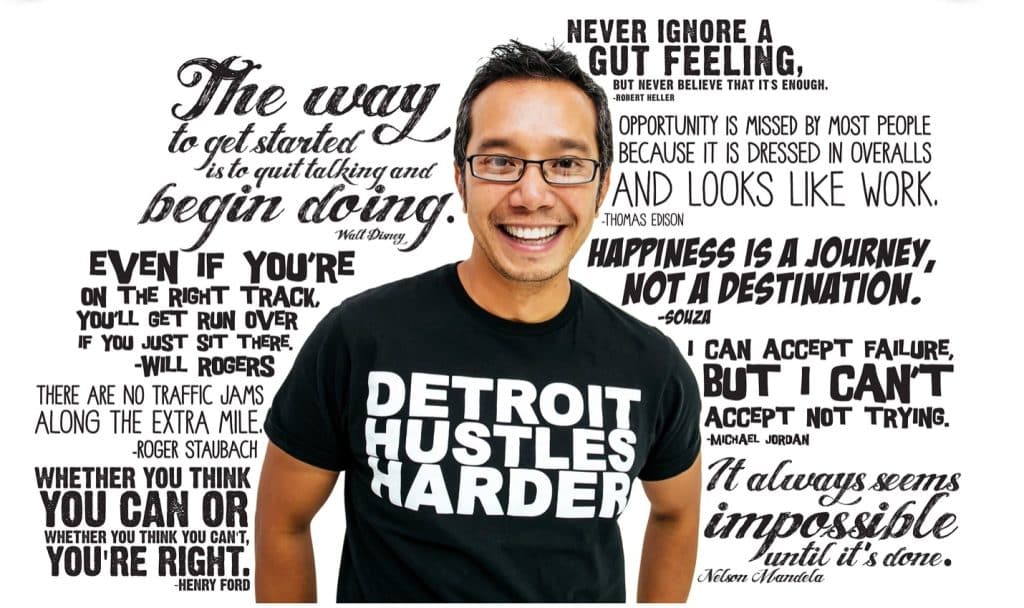
FB:
That's very clever. On your website, after your homepage, you have a Mindset page with a very nice photo of you, when you were a little bit younger, less gray hair, very dashing. It’s a page with a lot of very amusing, but helpful quotes. One of my favorites is, “I can accept failure. But I can't accept not trying.” That’s a Michael Jordan quote. I'm a huge fan of Michael Jordan but he has a few other quotes that I think are just as good if not a little bit better and I'm going to share two of them. “The key to success is failure.”
The reason he succeeded is because he didn't think about the consequences of missing the shot because he's so present in the moment. As a creator yourself, as a writer, when you're lost in your art or you're lost in your writing, everything calms down, everything gets quiet. You can call it the zone, call it whatever you want, but it's that state of mind that lets you start to create and find your imaginative power. I thought that was a great way to articulate the mindset for somebody who's just coming to your website, and you want to present how you think about the work at hand and how your employees slash students think about the work at hand.
FDR:
Absolutely. The other quote I also like is, “I will fail my way to success.” This is an ongoing game we are all in, there's not an end. End is when we're six feet under, right? It's an absolute long game. When we find those moments of flow that you were talking about, that Michael Jordan talks about, those are just so golden. I make most of my artwork in the middle of the night at one to four o'clock in the morning. I've figured out, at least for me, that is the easiest and fastest way for me to get into flow state. I know my phone isn't gonna ring. My email isn't gonna ding. I'm not gonna get buzzed.
FB:
We met in 2015 through my friend PJ Haarsma when I was looking for somebody to do a logo for Hatter Madigan: Ghost in the H.A.T.B.O.X. You invited PJ and I to one of your shows, and your artwork is comic book pages that you have taken out and collaged in your own way on big panels or surfboards. We went to a gallery opening of your artwork, and I took photographs of all of them, and I said to myself, “One day, I'm going to ask him to create a piece of art using my Hatter Madigan artwork from Ben Templesmith, which as you alluded to, happened just a month ago. But the artwork itself, when you're cutting out the particular pages and deciding what's going to be in the frame, I think the audience will now be able to imagine in their mind taking hundreds of pages of comics, and then reassembling them into a piece of artwork that looks from a distance like it has an interesting symmetrical vibe. But then when you come in close, you're picking and choosing, is it an action shot? Is it a thought bubble? Go through the process as you're describing it, so listeners understand what that art looks like.
FDR:
I love the way you just articulated that because it's very reflective of the art that I create, because from a distance, you see this giant piece, whether it be a ray, or whether it be this circular piece, whether it be a couple of star lights that is coming together. It brings you in from a distance. As you get closer, the art changes because you start to see the details of it. So, your experience of how you see the art from 10 feet away is completely different from how you experience the art from two feet away.
FB:
And every time you look at the art, especially when you step up, your eye is drawn to another aspect of it, which leads you to another pattern of seeing the artwork, which is why I find it so mesmerizing.
FDR:
Yeah, it gives me joy. I feel like I'm able to accomplish that when I'm in the zone and I'm in the flow undistracted, where I'm able to intentionally put together these moments where it draws you to different places.
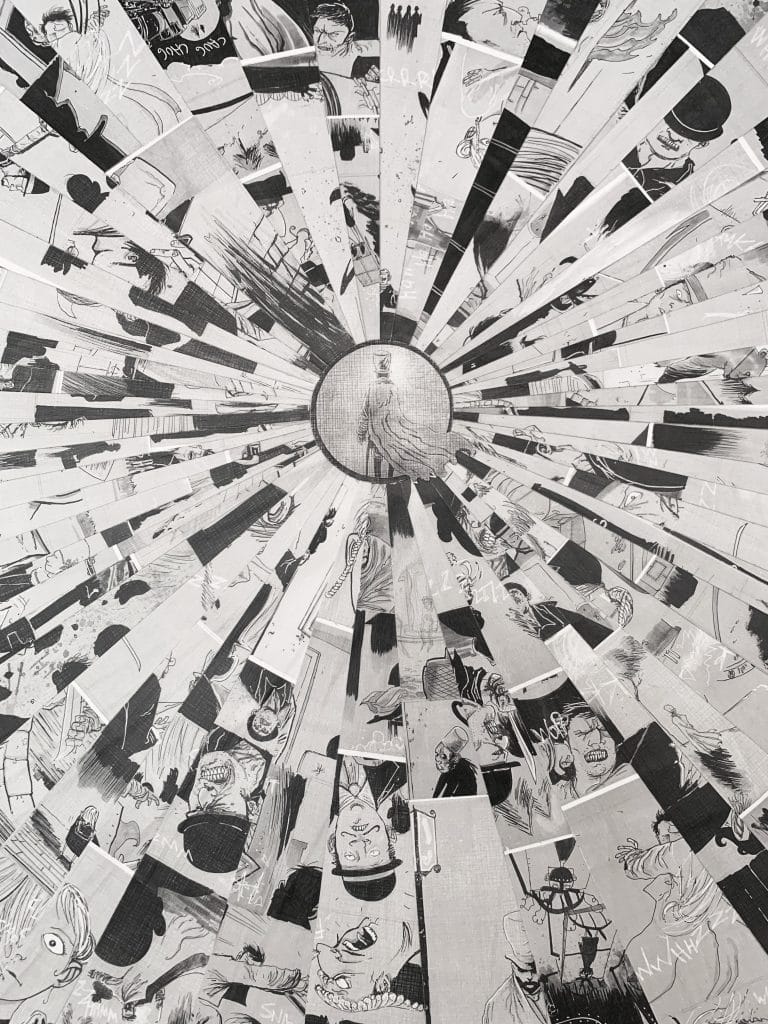
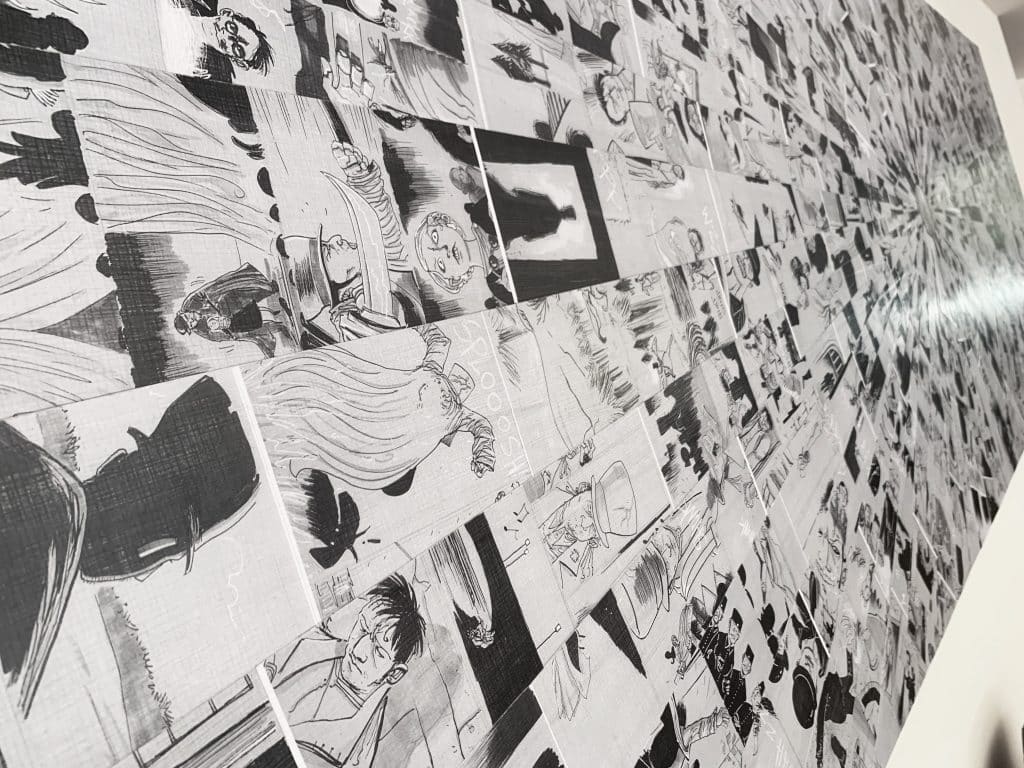
FB:
Let me ask you something about imagination and what role it plays in creation and art. In my book series, imagination is a big deal. Imagination is a power source. It's a magic system. One of the reasons that I landed on imagination was people would often ask, “How did you come up with that idea?”
One of my favorite imagination quotes is, “Imagination is the beginning of creation. You imagine what you desire, you will what you imagine, and at last you create what you will.” That's George Bernard Shaw. I get really excited about sharing this with listeners - the idea that it's right there, you just have to act on it. You just have to trust it and you have to be willing to fail.
FDR:
Imagination is obviously one of my favorite words as well, but it's a double-edged sword. It's so inspiring and so motivating but at the same time, I dare to say, it's so freaking scary. It's sometimes debilitating.
I can't tell you how many times I’ve looked at a blank canvas and everything is clear as day in my head on what that idea looks like but after that imaginative spark, after coming up with a concept, now you have to execute it. And that shit is scary, in so many different ways and on so many different levels. I'm not immune to doubt, uncertainty, or fear. That is very much prevalent in every step of the way.
FB:
As this is a podcast about Alice in Wonderland, let's talk about Alice as a muse for imagination and creativity, because Lewis Carroll's Alice has managed to stick around for over 150 years, and we'd be lucky if our artwork was around for 20 years.
What are your thoughts on that? Alice is in all parts of pop culture, so when you're designing, you must have come across Alice for an ad or a commercial or a reference. Give me one of your early introductions to Alice and any ways you've used Alice in your professional life.
FDR:
Just like many hundreds of kids, Disney was an integral part of growing up, specifically watching Disney movies. But Alice in Wonderland was not interesting to me as a child. As I look back on my relationship with the Alice in Wonderland story, as I got older, I could relate to Alice herself specifically about going down that rabbit hole and suddenly being transported into this magical, crazy imaginative world. That scared me as a kid. It wasn't until I developed some maturity and grew some courage that I really got into the storyline of it and better understood the themes. But I felt like I had to mature into it, because it scared the crap out of me as child.
FB:
I've told the same story over and over, which is, my grandmother's name was Alice and Alice in Wonderland was her favorite book and also my mom's favorite book because of it. So, when I was 10 or 11, while you were lucky enough to be reading Marvel and DC, I was reading Alice in Wonderland and I was just not interested in it. I wanted some real excitement. I wanted more of a heroic character, and she seemed to me to be very passive. But like you, when I went to college and I reread the book, I started to really appreciate thematically what it had to say about who are we, and about that journey. I started off disliking it and part of the reason that I wrote The Looking Glass Wars was because it’s sort of a revenge. I said, “Mom, I'm going to write a book that my 12-year-old son is going to enjoy.” It's still a queendom where women are in power and Alice is the lead character. It just needed some cool characters to support our lead female character. That’s how Hatter Madigan was born and I thought he's got to have a cool weapon of some sort. I let the 12-year-old who wanted to exact some revenge come up with the 12-year-old version and override the 20-year-old version who wanted to enjoy the literature aspects.
After seeing your artwork, I hired you and your company to come up with a logo and a look for the teenage Hatter Madigan. I'm really curious because you sent me 20 different versions, there were all sorts of ways that you articulated Hatter Madigan. You asked me a whole bunch of questions at the beginning. You read a bit. I gave you some ideas. I told you who the character was. How did you synthesize what you were asking of me?
FDR:
I imagine it as a filter. I love asking questions. You might have just a one-word answer or you might have a paragraph of an answer. But the way my brain and my creativity works are I get all that information from you, it runs through this synthesizing or filtering, and I'm such a visual person that it comes out as icons, as images, logos, and shapes. I remember one of the designs that I did where I looked at the hat which, obviously, is an iconic piece of imagery. I looked at the way that hat is shaped, and taking the name Hatter Madigan and finding the font that is tall and fits within the shape of that hat. But then the brim of the hat, I first sketched it straight, but then I took the concept of blades, and I did a simple curvature to showcase the blades. Because to me, the word blades and the word sharp translate into this kind of curvature, like a knife. That's how my brain processes things.
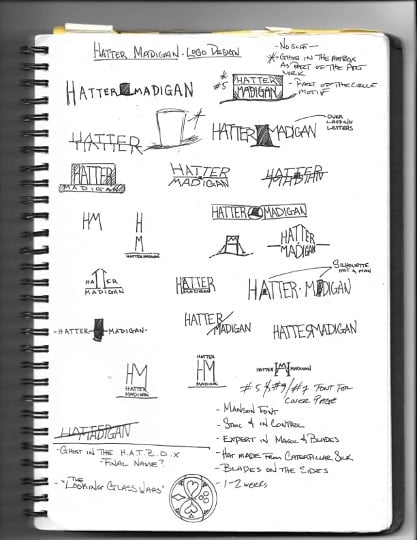

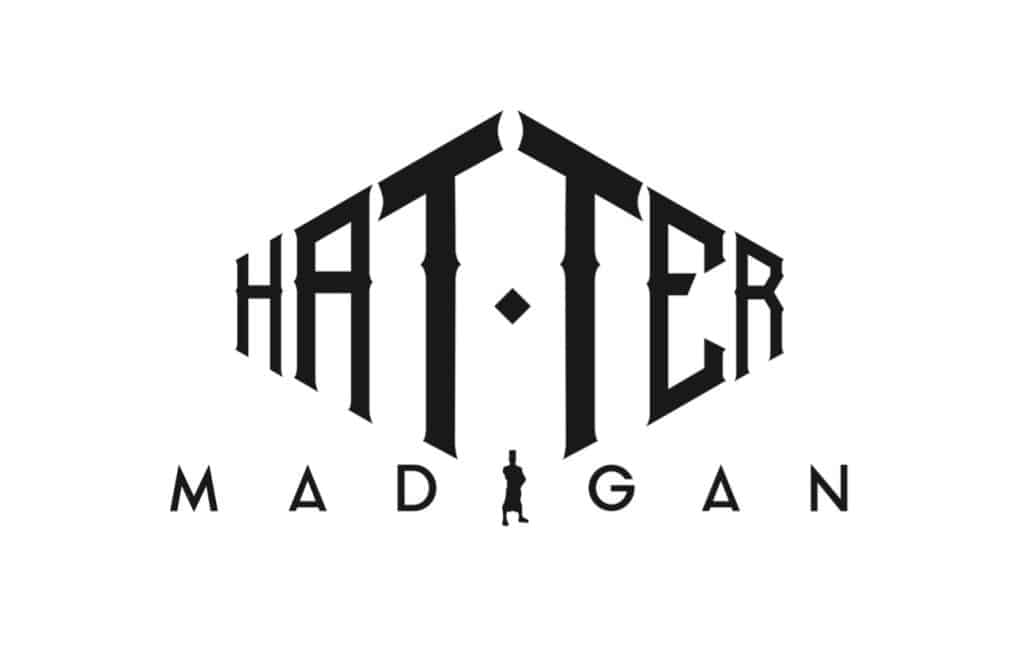
FB:
You're talking about the piece that was the final and it was my favorite. It is a hat form and the blade is a very thin line. It's not a literal hat. It's more of a design element. Then you put Hatter Madigan in the middle so they were stacked on top of each other. There was one where you had “Hat” and you had a little diamond in between. The “H” was small and the “T” got big and on the other side it was the “T.E.R.” and then in the middle it was “Hatter” and then you Hatter the person as the “I” for Madigan and I really liked that one as well. But I love what we landed on with the hat. It was like unwrapping the perfect Christmas present. This is exactly what I wanted. Thank you, Santa Fernando for delivering.
FDR:
Part of the mindset for me when it comes to showing different orientation of an idea, we live in a time where there are so many different ways to showcase creativity. I don't know what might inspire you. You might look at a logo and think, that's not right for the book or for the publication, but that would be a killer T-shirt or a great poster. I'm going to give you all of it because I never know what's going to inspire you and your publishing company.
FB:
The next thing that we worked on, which I believe you had a student work on for you, was the card soldiers. I've been interested in doing a deck of cards with card soldiers, for obvious reasons, and each one of the card soldiers would be represented by each one of the suits and each one of the numbers. So, if you had a two of spades, you'd see a card soldier with two spade insignias. We needed to figure out how the design of that would look so I came to you. I believe the person I worked with, who was amazing, she was a student, right?
FDR:
Amy Johnson. Amy’s great. She was a student at the time. She went through the whole process of it. She was a student who became part of my nonprofit agency that works with small local businesses, all pro bono, and it's an opportunity for students to get their feet wet. Then, from there, I hired her onto Concept Zombie and she did some work with you and did some work with a handful of other clients. Now, she's moved on to the design department of Skechers up in L.A. So, it's a nice process that I'm able to provide.
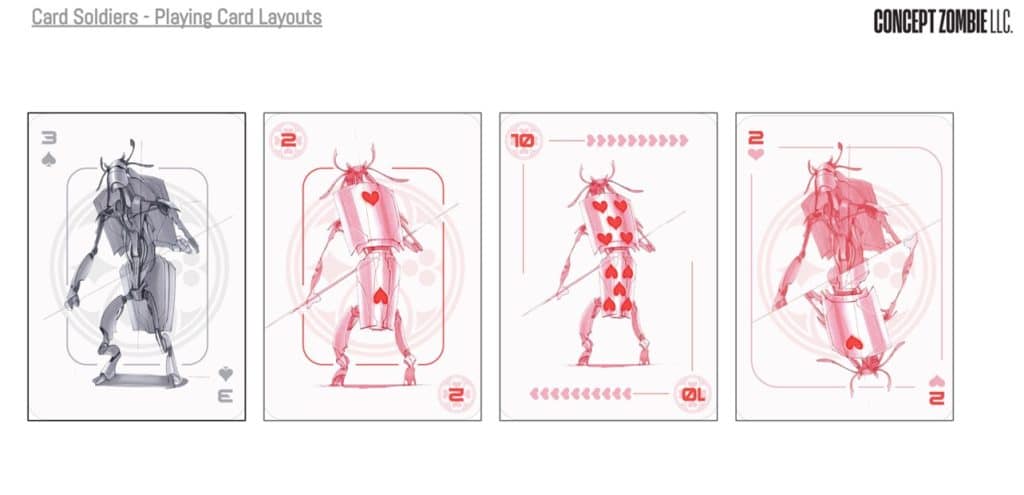
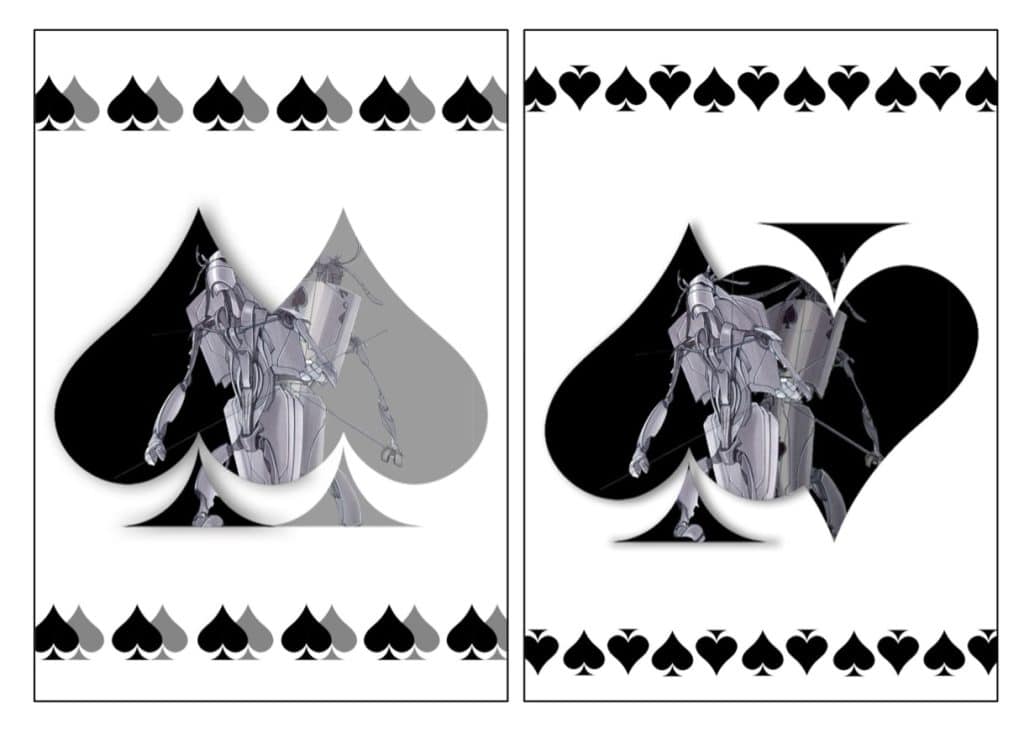
FB:
Her design is very elegant. She came up with some really spectacular ideas, within a limited framework, so I first thought, but then she sent these designs, and I realized that it was unlimited. I'm going to figure out a way to finish this playing card project. It’s one of those projects that I started and haven't had the bandwidth to finish but I really appreciated you putting her on the show.
There are two questions I ask all my guests: 1) What is your favorite iteration of Alice in Wonderland? 2) If you were a character from Alice in Wonderland, who would you be and why?
FDR:
My favorite iteration of Alice in Wonderland is actually The Matrix. If you remember, the marketing and advertising for The Matrix was absolutely brilliant. There were five different trailers and none of them explained what the movie was and I remember, to this day, sitting there in the movie theater with my wife and about 30 minutes into the movie we both looked at each other like, “We have no idea what this movie is about.” Then the fight scenes came on and she leaned over to me and said, “You're squeezing my hand too tight.”
That leads me to my answer to which character I find most relatable. It’s Alice/Neo. It goes back to that sense of fear I experienced as a child. It sounds like I use the word fear a lot in this conversation, because I am very cognizant of the fact that people can look at the how I've lived my life, my career path, and my creativity and easily say, “Man, Fernando, you're so brave. You're just not afraid to take that risk.” If anything at all, no, it's actually fear. It's so prevalent but, in spite of that, I still do it. If anything in some ways, because of that, I do it. The connection with the character of going into that whole new world and meeting all these crazy people and building relationships with pretty much every single one of them. From the people that are being helpful to the people that are trying to take off her head. I can't help but relate to that.
FB:
It’s really been a pleasure. Thank you, Fernando, for taking the time. It's been great fun.
FDR:
Thank you back, Frank. It’s been a privilege for me to be able to share my stories with you and your listeners. It’s such a pleasure to have this conversation with you.
FB:
All right, brother. Lots of love. Talk to you later. Thank you.
For the latest updates & news about All Things Alice, please read our blog and subscribe to our podcast!